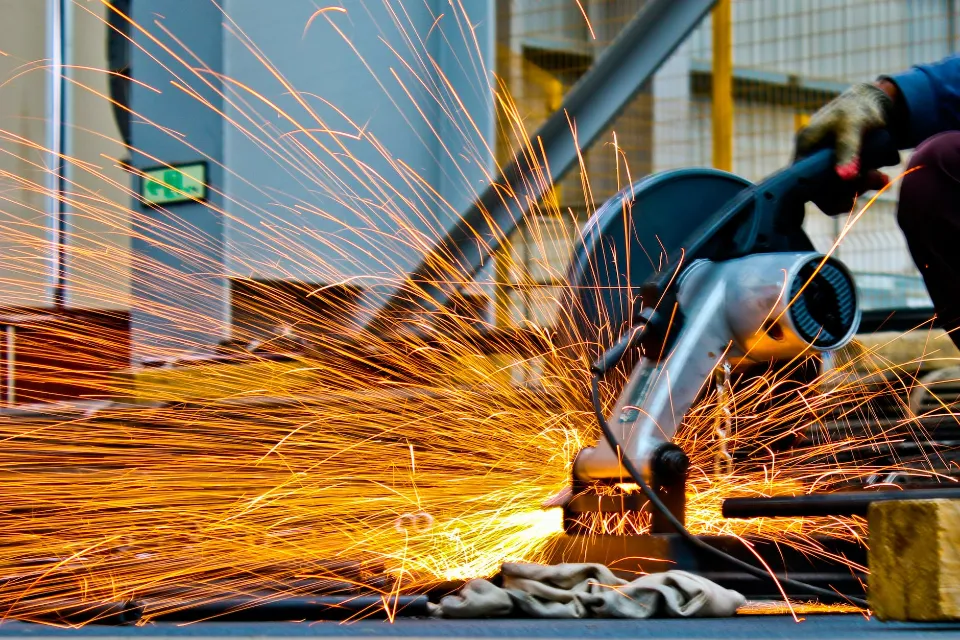
Ladders come in all different shapes and sizes and feature many different characteristics to make your job safer and easier. A roof ladder is simply an extension ladder that has been safely fastened to the ridge of a sloped roof to enable a roofer to work from an angle on the roof. Continue reading, you will learn how to use it safely, and how to choose and calculate the ladder.
Table of Contents
What Roofing Ladder?
Any suspended ladder with a ridge hook at the top that rests against the opposing side of a pitched roof is referred to as a roof ladder. In addition to supporting the ladder and ensuring that there is enough space between it and the roof to provide a secure hand and foothold, bearers are placed beneath the climbing face of the ladder.
A roof ladder must not be used as a leaning ladder or bridge. Roof ladders should not be used on flat roofs or roofs that are very steeply pitched because they are designed to be used on sloping roofs.
How to Use a Ladder on a Roof?
Setting up the ladder correctly is the first step. Make sure to position the ladder at the right angle of 75.5 degrees. The ladder should extend three feet above the roof line as well. Any additional or decreased extension may cause the ladder to fall from the roof or the operator to have trouble climbing the roof.
In regard to roof and ladder accidents, one of the most common places operators fall is the transition point between the ladder and the roof.
How to Use a Ladder to Get on a Roof?
There are numerous tasks that call for us to climb a ladder in order to reach a roof. Whether you need to get up on a roof to hang Christmas lights or clean the gutters, it’s important you know the steps to handling a ladder. To manage the task effectively and safely, follow these steps.
- Examine the ground and the ladder. Consider the best ladder to use, the angle at which to position it, and where to look for a ladder that is still in good shape. Lean the ladder against the surface it is supporting after extending it.
- Ladder feet should be secured in position.
- In the area around the ladder’s feet, drive two stakes deeply into the soil. Next, wrap a strap around the stakes and ladder.
- Wrap a second strap around the ladder and another secure object as you ascend the ladder, about halfway up. This item can be a window or anything else that is heavy enough to hold both the ladder system and you.
- Afterward, ascend to the system’s top and secure the ladder’s top.
How to Choose Roof Ladder?
Consider some of these creative choices to further tailor your roofing ladder options.
Extra-wide rungs to give you more foot room
Look for a ladder with extra-wide rungs. if you have large feet, or simply want better stability.
Extra-large rungs may also help with your balance and agility when moving up and down the ladder.
D Rung ladders
Any exterior roof ladder you choose should have non-slip serrated rungs to give you a good foothold.
Another option to think about is a D-Rung-style ladder for more foot stability.
For added comfort and stability while using the ladder, these rungs provide a horizontal stepping surface.
Podium or platform ladders
An all-purpose platform ladder may be required if you need to complete tasks near the gutter or soffit/fascia areas of the roof.
These are similar to A-frame (step) ladders but have a flat surface on the top section where you can store your tools and light work supplies. To increase balance and stability while working at heights, some models also let you stand directly on the platform and have a safety bar that is chest-high.
Ladders for uneven surfaces

If you’re working on a surface that isn’t perfectly flat, consider a ladder with adjustable legs to give your ladder greater stability on the ground.
Ladders with built-in levels
Ladder angle safety is crucial. The ladder must be placed one foot away from the building it is leaning on for every four feet of height, as per OSHA regulations.
Buying an extension ladder with bubble levels is an easy way to take this measurement. Using these levels gives you immediate confirmation that your ladder is angled correctly, just like when you are hanging a picture.
In order to help with proper angle determination, the National Institute for Occupational Safety and Health (NIOSH) also provides an app.
Combination ladder
Consider a ladder with two functions that enable you to convert it from an A-frame step ladder to an extension ladder by rotating and raising the back side of the ladder.
Articulated ladder
For the flexibility to set up the ladder in various configurations, articulated ladders offer one or more pairs of locking hinges.
As a result, you can at any time construct a work table, a stepladder, an extension ladder, a ladder with a double front, a ladder for a scaffold, or a ladder with an extension.
Double-sided A-Frame ladders (twin stepladders, double-front ladders,s or trestle ladders)
A stepladder with a double front is one that can be climbed simultaneously by two people, one on each side.
Unlike a traditional stepladder, which only has a stable back side that cannot be used or supported by weight, this stepladder can be used and is weight-bearing.
Telescopic roof ladders
Instead of slipping a parallel set of rungs behind the first, a telescoping extension ladder collapses, making storage simple.
Be careful not to choose the cheapest telescopic roof ladder and read user reviews carefully before making a purchase because some models may prick your fingers when folding up.
Tripod ladders
Consider a three-legged ladder with the ability to adjust the length of the back leg if you need more stability on your ground surface.
How to Calculate the Length You Need?
Considering the size of the ladder to use to access the roof? Remember that a ladder’s usable height is different from its actual height when determining how tall a ladder must be to reach a roof. Remember this when figuring out the bare minimum height the ladder needs to be to get to the roof.
You can only use the top three feet of an extension ladder, for instance. Overstepping could cause the ladder to become unbalanced and tip.
On the other hand, you can only safely use the top two feet of the second-to-last step on a step ladder; any further than that will cause the ladder to tip over.
If your ladder has a platform or utility rung, you can store materials in this extra space, which also provides something to hold onto when climbing and descending the ladder.
Extension Ladder Length
Make sure to take into account the extension ladder’s leaning angle when determining its length. In order to ensure stability when leaning against a building or wall, OSHA mandates that the base be spaced apart from the building by one foot for every four feet of height. The feet might slip out if you raise yourself too high. You might have to climb higher than is safe if you undershoot, which could cause you to become unbalanced.
Ladder Duty Rating

Before you purchase a ladder, be sure to carefully consider its duty rating. This is the maximum weight of person and materials – or “live load” – a ladder is rated for. Never forget to weigh the items you are carrying while using a ladder in addition to your own body weight; heavy roofing materials like shingles can quickly add up and bring you dangerously close to the maximum load your ladder can support.
The various ratings are shown here.
- Type III-Light Duty 200 pounds (for household use).
- Type II-Medium Duty 225 Pounds (commercial handymen, light maintenance, and mechanics).
- 250 pounds, Type I Heavy Duty (for tradespeople, construction, and industry).
- Extra-heavy duty Type 1A, 300 pounds (for industrial use).
- Heavy-duty industrial use Type IAA, rated for 375 pounds.
Additionally, look for an ANSI sticker, which verifies that the ladder can support four times its maximum rated load in addition to its own weight. This is a built-in safety feature that guarantees your ladder will hold, but you should always adhere to the rated load that is specified.
In addition, the sticker serves as a reminder that you should only use the ladder for the purposes for which it was intended and that, before using the ladder, you should receive the appropriate instruction on its use and maintenance.
What Equipment to Wear for Personal Protective?
Appropriate trousers. Shorts are not advised when working on roofs because they put your legs at risk for cuts, grazes, and splinters.
Protective footwear. To protect against dropped objects, steel toecaps (or an equivalent) are required. To stop piercing or penetration by nails and other sharp objects, the midsole must be protected.
Safety helmets. When working on roofs, safety helmets are recommended for two reasons. The first is to offer defense against anything that might fall while on the ground while ascending or descending, or while on the roof. The second is fall protection.
Safety glasses should always be worn in situations where the material is likely to fly into the eyes. All instances of cutting or sawing fall under this category.
Knee pads should also be considered, to protect the knees from strain and damage, due to compression and wear on the joint.
Conclusion
Knowing the importance of the right tools for the job as a professional roofer, you can complete the task successfully. When selecting an exterior roof ladder, keep this in mind and take your time learning about the wide range of options available. When you choose the ladder that is best for your roofing jobs, you’ll feel safe and secure, and your work will reflect that support.



